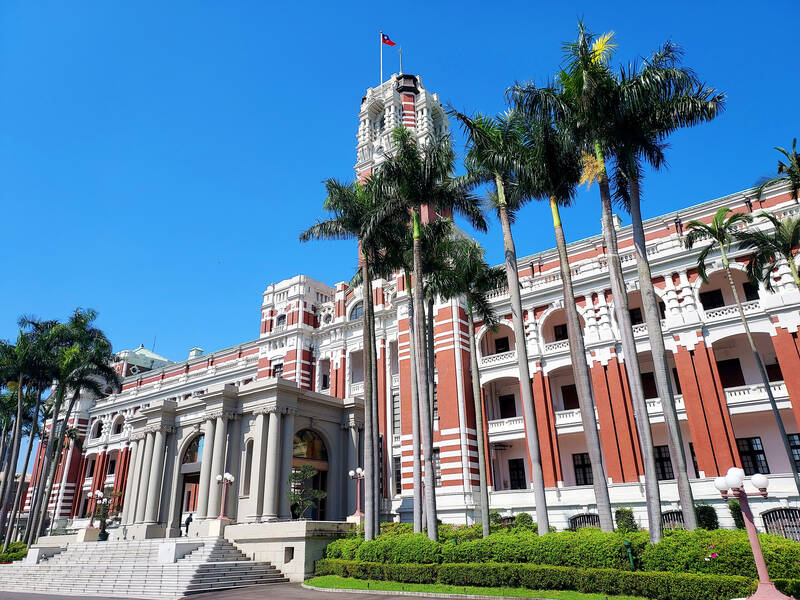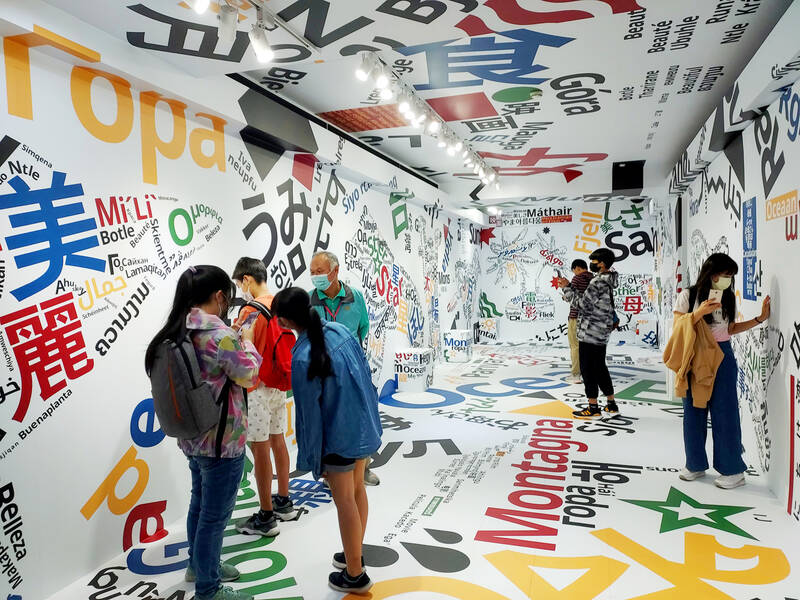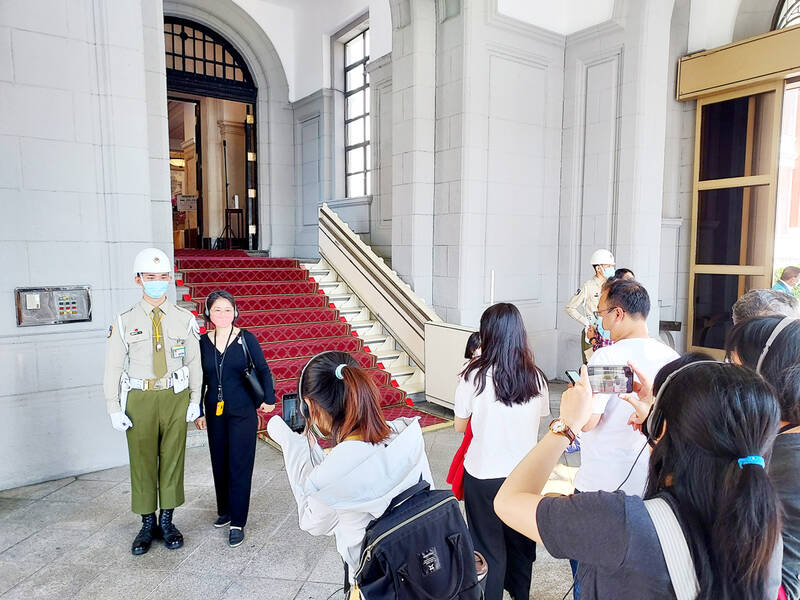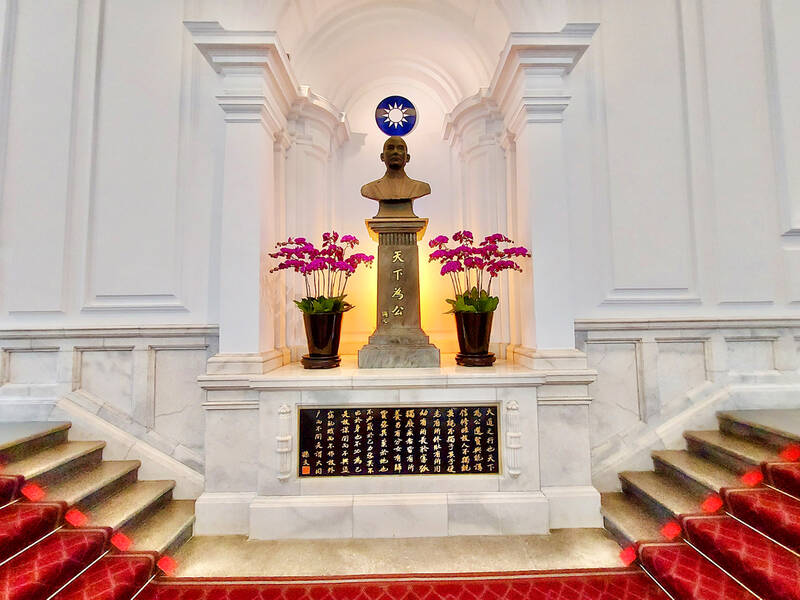Most tourists and longtime residents of Taiwan have visited Taipei’s tallest building, Taipei 101, at some point. Far fewer make it inside the building that was Taipei’s tallest over a century ago and is still standing today. It has withstood fires, American bombardment during World War II and major political regime changes. Throughout most of its existence, its purpose has remained the same, serving as an office for the leader of Taiwan: the governor-general during the Japanese era, and the Republic of China (ROC) president since then. This place is the Presidential Office Building (總統府).
As it is still in active use, much of the building is not open to the public. However, there are occasional “Open House” days where the public is allowed to enter and view much of the first, second and third floors. Take advantage of this rare opportunity to explore one of Taiwan’s best-preserved examples of colonial architecture, where foreign dignitaries meet with the nation’s president. Admission is free, and optional guided tours (also free) are available.
COLONIAL ARCHITECTURE

Photo: Tyler Cottenie
Entrance to the property is through the northwest corner at the intersection of Boai and Baoqing roads. The tour goes clockwise around the exterior of the building to the main entrance, which faces east toward the rising sun like many other official buildings in colonial Japan. The original entrance was damaged by bombing during the Taihoku Air Raid and its domed roof was replaced by the current simpler version in 1947, when the bombing damage was finally repaired. The new entrance also suffered minor damage in 2014 when a gravel truck was driven up the stairs in attempt to ram through the entrance, only to be stopped by the bulletproof door.
Natural disasters, on the other hand, have not inflicted much damage to the Presidential Office Building. It was one of the first buildings in Taiwan to make use of steel-reinforced concrete, allowing its eleven-story tower to survive a century of earthquakes. The building itself is shaped like the Japanese character for sun (日) when viewed from above, and octagonal structures at the four corners provide additional earthquake resistance.
The visual style of the building is heavily influenced by Western architecture, but Taiwan and the Japanese Empire were still represented in the materials chosen. The red brick and white trim mimic English Victorian architecture, the entrance features Ionic columns from Greek architecture and the Entrance Hall was initially decorated in an ornate Baroque style. However, materials like tile and cement came from elsewhere in Japan, while the wood came from Taiwan itself, as did the quicklime used to paint the interior. Original bronze decorations and other metallic items were removed and melted down to help with Japan’s war effort and were never restored.

Photo: Tyler Cottenie
THE IMPRESSIVE INTERIOR
To enter the building, climb the staircase to the main entrance, where military police in their conspicuous olive uniforms, white helmets and white gloves solemnly stand guard. Visitors can take photos beside them if it is done respectfully. Upon entering the building, the first room visitors see is the Entrance Hall, whose original ornate decoration was replaced by a simplified style during 1978 renovations. It is now a beautiful though somewhat austere space with pristine white walls accentuated by a red carpet and gorgeous pots of purple orchids. Balconies from the second floor open onto this space on three sides and soft lighting comes from an even higher ceiling.
Straight ahead is a staircase that ends in a landing before splitting into two staircases heading left and right to the second floor. On the landing is the focal point of the room, a bronze bust of Sun Yat-Sen (孫中山), founding father of the ROC. The current statue was installed in 1958, then placed in a warehouse when the entrance hall was “redecorated” during the presidency of Chen Shui-bian (陳水扁), before finally being restored in 2008 by newly-elected president Ma Ying-jeou (馬英九).

Photo: Tyler Cottenie
Continuing up to the third floor, visitors can walk the corridors where ROC presidents and countless visiting dignitaries have trodden. Take note of the doorknobs on the rooms lining the corridors. Some of them were installed particularly low by the Japanese, so that anyone entering or exiting these rooms would have to bend down at the waist and bow their head slightly, a form of forced politeness.
One of the highlights of the tour is the Reception Hall on the third floor. This is a rather plain room with a vaulted ceiling and wall-to-wall red carpeting. In the center of the back wall, above a dais, hang the ROC flag and a portrait of Sun Yat-Sen, flanked by pots of orchids. This room appears often on the news as the location of important ceremonies and news conferences. Former US House of Representatives speaker Nancy Pelosi, for instance, was awarded the Order of Propitious Clouds with Special Grand Cordon in this room during her controversial Taiwan visit last year.
A LIVING MUSEUM

Photo: Tyler Cottenie
The tour ends down on the first floor. The two courtyards enclosed by the building’s sun shape are also open to the public during Open House days. They are delightful garden spaces with benches and tables where visitors can sit in the shade, surrounded by manicured shrubs and potted flowers, with a clear view of the building’s tower. It’s a great place to enjoy a local snack, purchased from one of the vendors on the first floor that sell local products from the different regions of Taiwan.
The first floor is also a combination museum and art gallery. There are exhibits describing the design, construction and modifications to the Presidential Office Building, various artifacts on display including the desk of former president Chiang Ching-kuo (蔣經國), art displays from modern Taiwanese artists, and interactive exhibits.
When the author visited, there was an augmented reality exhibit where visitors could record themselves sitting down in front of a green screen and a video would be created as if they were a guest on a talk show panel with the president. Similar technology was used to interact with an art exhibit. Currently, the Kemasi Maza exhibit here explores Taiwan’s indigenous peoples and their connection to other Austronesians.

Photo: Tyler Cottenie
The first-floor exhibits are also open to the public every weekday morning (enter before 11:30am), but to get the full experience and see more of the building, it is recommended to visit on Open House days. Upcoming dates are July 1, Aug. 5 and Sept. 16. The nearby Taipei Guest House (台北賓館), former residence of the Japanese governor-general, is normally closed to the public, but also has Open House days on the same dates. A combined visit to both places would make for a perfect Saturday outing.
For complete information about the tour, visit: english.president.gov.tw.

Most heroes are remembered for the battles they fought. Taiwan’s Black Bat Squadron is remembered for flying into Chinese airspace 838 times between 1953 and 1967, and for the 148 men whose sacrifice bought the intelligence that kept Taiwan secure. Two-thirds of the squadron died carrying out missions most people wouldn’t learn about for another 40 years. The squadron lost 15 aircraft and 148 crew members over those 14 years, making it the deadliest unit in Taiwan’s military history by casualty rate. They flew at night, often at low altitudes, straight into some of the most heavily defended airspace in Asia.

Many people in Taiwan first learned about universal basic income (UBI) — the idea that the government should provide regular, no-strings-attached payments to each citizen — in 2019. While seeking the Democratic nomination for the 2020 US presidential election, Andrew Yang, a politician of Taiwanese descent, said that, if elected, he’d institute a UBI of US$1,000 per month to “get the economic boot off of people’s throats, allowing them to lift their heads up, breathe, and get excited for the future.” His campaign petered out, but the concept of UBI hasn’t gone away. Throughout the industrialized world, there are fears that

Like much in the world today, theater has experienced major disruptions over the six years since COVID-19. The pandemic, the war in Ukraine and social media have created a new normal of geopolitical and information uncertainty, and the performing arts are not immune to these effects. “Ten years ago people wanted to come to the theater to engage with important issues, but now the Internet allows them to engage with those issues powerfully and immediately,” said Faith Tan, programming director of the Esplanade in Singapore, speaking last week in Japan. “One reaction to unpredictability has been a renewed emphasis on

Taiwan’s democracy is at risk. Be very alarmed. This is not a drill. The current constitutional crisis progressed slowly, then suddenly. Political tensions, partisan hostility and emotions are all running high right when cool heads and calm negotiation are most needed. Oxford defines brinkmanship as: “The art or practice of pursuing a dangerous policy to the limits of safety before stopping, especially in politics.” It says the term comes from a quote from a 1956 Cold War interview with then-American Secretary of State John Foster Dulles, when he said: ‘The ability to get to the verge without getting into the war is